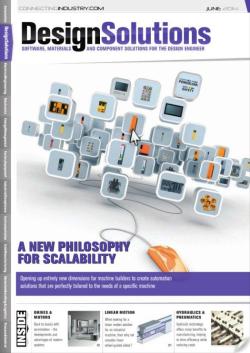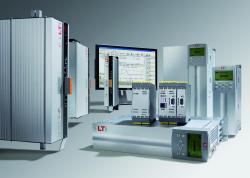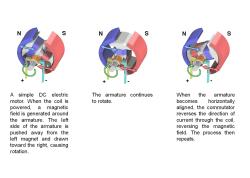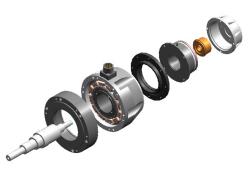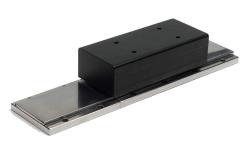As seen in Design Solutions magazine – our Quick Guide to Servomotors
Published Aug 22, 2014We're very pleased to have been asked to produce a quick guide to servomotors for the June 2014 issue of Design Solutions magazine. The article goes back to basics and looks at some of the latest developments and advantages of modern systems. You can see the article in Design Solutions magazine or read it here where we have reproduced it with the kind permission of the editor. We hope you find it interesting and useful.
The term servomotor derives from the Latin, servus, meaning slave, or to serve, and is meant to indicate the use of a motor whose main function is to respond to commands or to perform specific tasks. The origin, or first use, is generally believed to have come from the French, Le Servomoteur, coined by J.J.L. Farcot in 1868 with his reference to hydraulic motors and steam engines used in the steering mechanisms of ships.
Today, modern servo systems are used to perform many motion control tasks, from the relatively simple to the highly complex and dynamic requirements of demanding applications. The main benefit of a servo system is the ability to precisely control speed, torque and position through closed-loop control. Fundamentally it consists of a motor, a feedback device connected to the shaft of the motor, such as an encoder or a resolver, and the electronic control.
Servos offer distinct advantages over other types of motors on systems that require highly accurate control of speed and motion. They operate with an extremely high degree of precision and can accommodate complex motion profiles on a wide range of demanding applications.
Just like stepper motors, brushless servomotors evolved from brushed DC motors. On brushed DC motors permanent magnets in the motor housing form the stator field, and windings on the rotor, or armature, react with this field by turning when an electric current is applied. To keep the shaft of the motor turning the magnetic field in the rotor is continuously switched, and this supply of current, and the switching, is done mechanically by the brushes and the commutator.
On a brushless servomotor there is no commutator or brushes, and the original motor design has been more or less turned inside out, so that the fixed field is now on the rotor and the windings have been moved to the stator. The commutation is performed by an external switching device known as the drive. The drive supplies the power based on the commands of a motion controller, and together they provide the electronic control of the system.
Brushless servomotors are highly reliable and virtually maintenance free since the arcing that occurs on brushed motors between adjacent segments of the commutator, resulting in erosion, is eliminated. With no windings on the rotor they are not subjected to centrifugal forces, and because the windings are supported by the housing, they can be cooled by conduction, requiring no airflow inside the motor. This in turn means that the motor's internal elements can be entirely enclosed and protected from dirt and the ingress of other foreign matter.
Brushless motors can be specified as AC or DC, which can be confusing as both AC and DC drives produce an alternating output. The difference is in the shape of the alternating current waveform derived from the drive into the stator windings: DC is designed to produce a square wave or trapeziodal output and back emf, and AC is designed to produce a sinusoidal output and back emf.
Brushless DC systems are more associated with analogue drives and lower-cost or small motor systems. They can be more dynamic but suffer from low speed cogging and are therefore more difficult to control at low speed. AC motors are smoother and are more associated with digital systems. With high bandwidth and high resolution drives they can be equally, or even more dynamic than their DC counterparts.
In more recent times Torque motors, also known as Direct Drive motors, have become increasingly popular with the need for greater reliability, higher accuracy and improved efficiency. The direct drive motor is essentially a brushless servomotor with a greater number of windings on the stator. Standard motors have 4, 6, 8 or even 10 poles, whereas direct drive motors typically have between 18 and 56.
Direct drive motors run at lower speeds, usually less than 1,000rpm, and they produce significantly higher torque. This means that they can be attached directly to the load removing the need for gearboxes and other power transmission components. Whereas standard motors typically have a small frame size and a long body, direct drive motors have a large frame size and a short body.
The direct drive motor concept has also been ingeniously adapted to provide linear motors to suit almost any application where the precise control of linear motion is required. Direct drive linear motors are basically opened-up brushless servomotors where the rotor (magnet) is laid flat to form a track and the stator (winding) becomes the carriage.
Direct drive linear motors deliver very high performance in terms of speed, acceleration and precise positioning, and they outperform conventional mechanical alternatives such as belt and ball-screw driven actuators and rack-and-pinion drives.
Servomotors are found on a wide range of industrial applications such as machine tools, packaging machinery, conveying, coil winders, labelling equipment, converting equipment, laboratory equipment, robotics, X-Y tables, and general automation.
